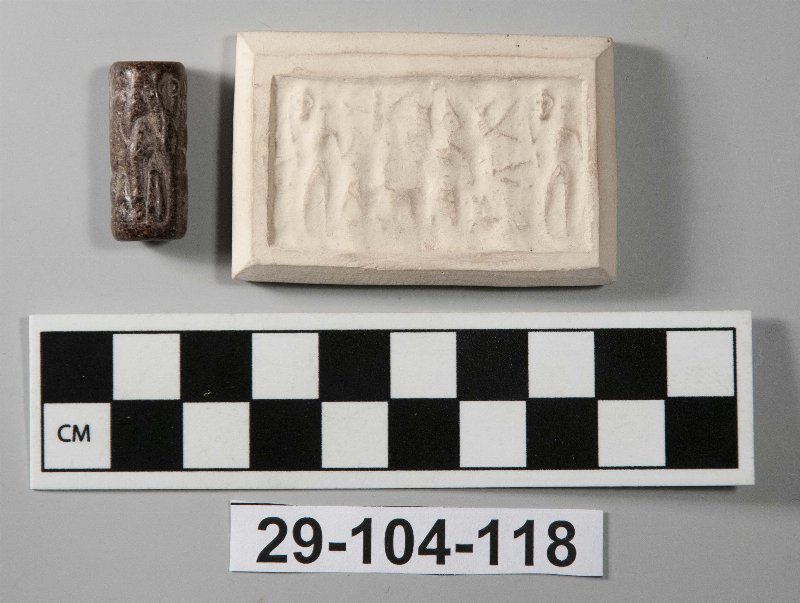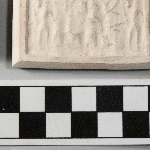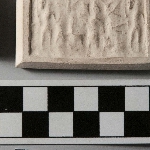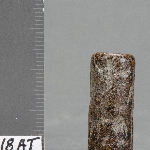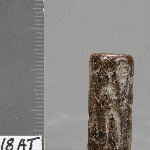Cylinder Seal
29-104-118
Location: On Display in the Eastern Mediterranean Gallery
From: Israel | Beth Shean
Curatorial Section: Near Eastern
| Object Number | 29-104-118 |
| Current Location | Eastern Mediterranean Gallery - On Display |
| Provenience | Israel | Beth Shean |
| Archaeology Area | Room 1252, Level VII |
| Period | Late Bronze IIB |
| Date Made | 1300-1200 BCE |
| Section | Near Eastern |
| Materials | Hematite |
| Iconography | Animals | Deity |
| Inscription Language | Hittite Language |
| Description | Hematite. On the seal are represented two deities, also some kind of unidentified animal with a second emblem above it. Before the animal is the first of the two deities, who holds some object, perhaps an aze, in his right hand. In front of his head is the Hittite hieroglyph which is thought to mean "god". Behind the animal is the second deity, (Taraqu), who wears a conical cap. Against the back of his head is written the Hittite Hieroglyph meaning "first". In front of the latter deity is an ass, near which is a Hittite hieroglyph as yet undecipherable. Rowe: The Hittite seal is of hematite and is by far the most important of its kind found in Palestine. On it are represented two deities and also an elephant (this is the first occurance of the animal on cylinder seals) with a vulture above it. Before the elephant stands one of the deities who holds an axe (?) in his right hand. In front of his head is the Hittite hieroglyph usually read as "god". Behind the elephant is the other deity, who wears a conical cap. Against the back of his head is the hieroglyph probably meant "fort". In front of the latter deity are an ass (a common emblem of Set) and some emblem - an altar ? - not yet made out. Other Hittite influence seems to be indicated by the style of the gateway of the migdol." |
| Height | 2.6 cm |
| Outside Diameter | 1.1 cm |
| Credit Line | Expedition to Beth Shean (Beisan); Clarence Fisher, 1921-1928 |
| Other Number | 27-10-500 - Field No SF |
Report problems and issues to digitalmedia@pennmuseum.org.


